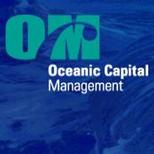 Author: Tom Yorke, Oceanic Capital Management
Author: Tom Yorke, Oceanic Capital Management
Covestor models: Global Diversified Conservative and Global Diversified Aggressive
Disclosure: None
The vagaries of the daily market’s machinations, the constant whipsawing and increasing volatility can almost make one nauseous. Listening to the talking heads explain each day’s – no, each moment’s movements is almost comical and is certainly irritating. It’s as if we need to have an update on the score of our hometown team every second or two.
The difference of course is that there is a definitive end time for the ballgame. Not so for our financial plan. Getting sucked in, as we watch the “big money” circus act and try to apply the same rules to our own financial situation encourages only the worst tendencies of an individual’s nature. Jump on board when everyone else does and it feels good. Sadly, history has shown this to be a very poor practice, not any kind of strategy for our (or our family’s) longer term financial well being.
Take a breath.
Mute the media.
Assess new factors.
Tweak slightly (to stay the course).
Get back to work.
There is no secret sauce, no formula dictating when to step in or out of a market. The best we can hope for is to plan our trek, diligently strive to stay on course, and then make sure our side trips off the plan happen only when we hit a dead end or a bridge out. We need to accommodate these unexpected diversions, but they should not be allowed to change our basic course.
Earthquakes, tsunamis, riots, floods, wildfires, even global unrest cannot be more than randomly predicted – and they can never be timed. But they can be imagined and they can therefore become part of our planning. Over the last three decades, no matter how we slice it, we have seen Black Swans or “Minsky Moments” about every few years… things that were never supposed to happen magically do.
In the winter of 2009 at a New York dinner gathering of intergalactic hedge funds, it was decided the euro couldn’t possibly hold at its level at that time. It didn’t, and it traded well below that level by the May 2010 Flash Crash. In any case, the euro shortly thereafter began its assent, interrupted by only by a year-end down-trade, despite the fundamentals for the Euro bloc getting worse by the day. The logical assertions about the relationship between hardworking northern Europeans and southern European slackers seemed only to make the fundamentals worse, but somehow the Euro still traded up, until recently. These type market movements, which defy logic, can clearly not be predicted. Trying to do so is a waste of time and most likely money.
How does this all guide our investing? It reaffirms our unwillingness to bet the farm on any one asset class. And it leads us to spread even our allocation to equities across what we consider category killers, those companies big enough to dominate a competitive landscape or dynamic enough to be changing it. Then we look to international and emerging equities, via ETFs. Our final equity subset includes one or two specific groups that we consider interesting, say a “new fundamental” like biotechnology.
Precious metals have been especially volatile lately (silver in particular) and as much as we didn’t get too excited on the run-up, we won’t get too excited on the inevitable pullback. Trying to predict when each cycle will occur is difficult at best and more likely a prescription for missed opportunities in and out of the sector. We prefer to hold a core precious metals allocation, rebalancing periodically, and selectively increasing exposure to assets that have fallen out of favor. At this moment, we would be adding to our gold position on any kind of meaningful pullback.
Other themes attracting our attention these days: Real Estate and muni bonds. Because we see no “category killers” in either of these spaces, we favor REITs and certain funds.
The money printing presses in the USA continue to run amuck and the inevitable result will be the continued devaluation of the dollar. As such, we are sniffing around in some commodity sectors again, waiting for something interesting: Bunge (NYSE: BG), Monsanto (NYSE: MON) or more GIS?
We will clearly be avoiding those ETFs that get killed by markets in contango or when the locals see the dealers coming in to sell one contract and roll their futures holdings into the next. Those are just two large headwinds we plan on avoiding.
– Tom Yorke for Oceanic Capital Management
Hedge fund dinner source:
“U.S. Said to Tell Hedge Funds to Save Euro Records”, Katherine Burton and David Scheer, Bloomberg News, 3/3/10 https://www.bloomberg.com/apps/news?pid=newsarchive&sid=ajXAG4wR7uGk&pos=6

